I just use a penny stove. I payed no money for it, and denatured alcohol is really cheap. I don't bother with lighters. My fire kit is an altoids tin containing cotton balls, dryer lint, Swedish Firesteel, matches, slivers of fatwood, and some birthday candles. I also carry a UCO nine hour candle with me. A UCO candle lantern is a luxury but very useful.
The load out- a guide and example (pic heavy)
- Thread starter Wilderbeast
- Start date
-
Come along to the amazing Summer Moot (21st July - 2nd August), a festival of bushcrafting and camping in a beautiful woodland PLEASE CLICK HERE for more information.
You are using an out of date browser. It may not display this or other websites correctly.
You should upgrade or use an alternative browser.
You should upgrade or use an alternative browser.
I've found this really helpful, thank you.
Being a total noob I was just carrying way too much stuff that I didn't need.
Being a total noob I was just carrying way too much stuff that I didn't need.
Have another bump well a selfish bump on my part so I can find this thread when I'm at my pc and not on the phone, as an over packer myself I'm looking forward to more tips, thanks for sharing
Sent from my GT-N7105 using Tapatalk
Sent from my GT-N7105 using Tapatalk
I like the gear that others have pictured here. I wonder how much they have changed over the years. In my case, the major items haven't changed in thirty years. Still use the same tent, same sleeping bag, same stoves, and usually the same cookware. The packs have varied, chiefly because I have more than one and I just like the experience of using a different pack. None are at all lightweight, however. Comfort in carrying them easily outweighs actual weight. Of all the packs, the one with the greatest capacity, even though it's the heaviest, is a PLCE rucksack. It's the most comfortable, too. My US Army mountain rucksack made in 1942 is probably the second most comfortable and will carry the biggest load after the PLCE rucksack, although it's a little harder to pack. So basically, either I'm hopelessly old-fashioned or we haven't progressed as far as we think; probably the former. A rucksack with a waistbelt (been around since before WWI, too) makes me feel like I'm tied up and usually, the weight is way too high for balance. In the places where I mostly go, a cord is considered essential for suspending your food from a tree at night. But I don't use "para cord," which seems to be everyone's solution to earthquakes and terrorist attacks. Instead, I use plain white nylon cord. It doesn't "run" when wet and it's easier to see at night. I must have a dozen knives but of all the things I usually bring along, a knife gets less use than almost anything. Needless to say, I never have an axe. But everything evolves. I wonder what "Nessmuk" would think of these lists?
Good thread. Here is my gear:
[video=youtube;m8o95Dug4rY]https://www.youtube.com/watch?v=m8o95Dug4rY&noredirect =1[/video]
together with my pocket kit: https://www.youtube.com/watch?v=vKBXl5Yv7s4
and here is my list for affordable beginner gear: http://woodtrekker.blogspot.com/2013/10/beginners-guide-to-affordable-bushcraft.html
[video=youtube;m8o95Dug4rY]https://www.youtube.com/watch?v=m8o95Dug4rY&noredirect =1[/video]
together with my pocket kit: https://www.youtube.com/watch?v=vKBXl5Yv7s4
and here is my list for affordable beginner gear: http://woodtrekker.blogspot.com/2013/10/beginners-guide-to-affordable-bushcraft.html
Just found this thread and, as a total new starter, it's a light in the darkness for me!
One query I do have is about water carrying. As part of the brain injuries I have "Diabetes Insipidus". It means that my body can't keep hold of water. I take Anti diuretic hormones that save me from TEH DETH but I need a LOT of water to replace what, ahem, leaves my body. In a normal day I would probably have to drink at least 5 litres of water, not including coffee and cooking water. Any suggestions how to carry the sort of volume I need for safety, without filling a trailer and towing it from my belt?
One query I do have is about water carrying. As part of the brain injuries I have "Diabetes Insipidus". It means that my body can't keep hold of water. I take Anti diuretic hormones that save me from TEH DETH but I need a LOT of water to replace what, ahem, leaves my body. In a normal day I would probably have to drink at least 5 litres of water, not including coffee and cooking water. Any suggestions how to carry the sort of volume I need for safety, without filling a trailer and towing it from my belt?
Make sure you are near a source of water especially with your condition,Just found this thread and, as a total new starter, it's a light in the darkness for me!
One query I do have is about water carrying. As part of the brain injuries I have "Diabetes Insipidus". It means that my body can't keep hold of water. I take Anti diuretic hormones that save me from TEH DETH but I need a LOT of water to replace what, ahem, leaves my body. In a normal day I would probably have to drink at least 5 litres of water, not including coffee and cooking water. Any suggestions how to carry the sort of volume I need for safety, without filling a trailer and towing it from my belt?
I carry a few bits to filter water with, first off a milbank bag to pre filter then a mini sawyer filter. Pre filtering enables longer between flush back cleaning the sawyer,
Keep distinct clean / dirty regime to prevent cross contamination,
As long as my water source remains I have constant water and have drunk from some very questionable sources which were very smelly
Good luck and post your own experiences, jeff
Sent by Tigger from my Tablet
Very good post, well laid out and equally well explained, thanksHi all,
I've decided to write a thread about putting together your personal load out. As an example I've used my personal load out. I would never claim for this guide to be law, my load out is at times extravagant and unnecessary, it is however what works for me. Most importantly it is a basis for which a complete beginner could base their load out around.
My load out is based around the unpredictability of camping in Great Britain. We often do not know the fire rules, the availability of trees or even fresh drinking water. I therefore pack with this in mind, making me sure I am ready for most situations.
The titles for the sections have been taken from the book BUSHCRAFT by Ray Mears. What inspired me to write this guide was this section from the book:
1. Something to carry your outfit in
This is my Pack the Lowe Alpine Sting. It is also known as the "Dutch patrol pack". It has two detachable side pockets and also an extra pouch that I added to the front using the MOLLE attachments. All in all this has a capacity of around 70L which is more than enough for any outing I need, and gives ample space for spare clothes and food for the trip.
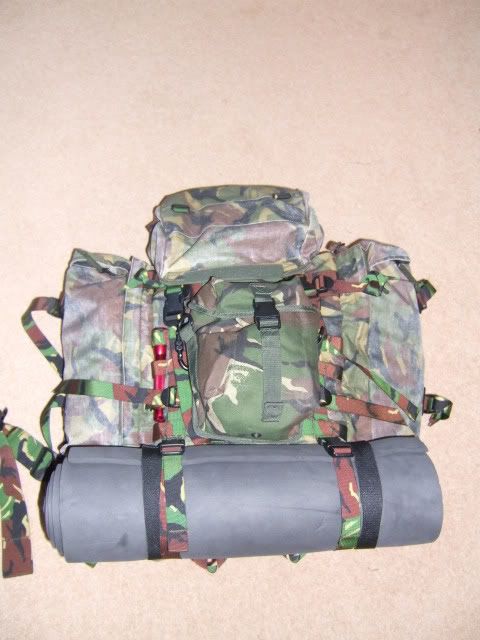
This is a picture of the adjustable back system, for me this is essential if you intend to do any amount of walking. For a while I used an army surplus PLCE Bergen. It was too large for me and uncomfortable, I'm far happier with this one. Always choose a pack which suits your needs. Too big is probably better than too small, however only marginally so as if there is too much spare space, you may be tempted to fill it with unnecessary items.
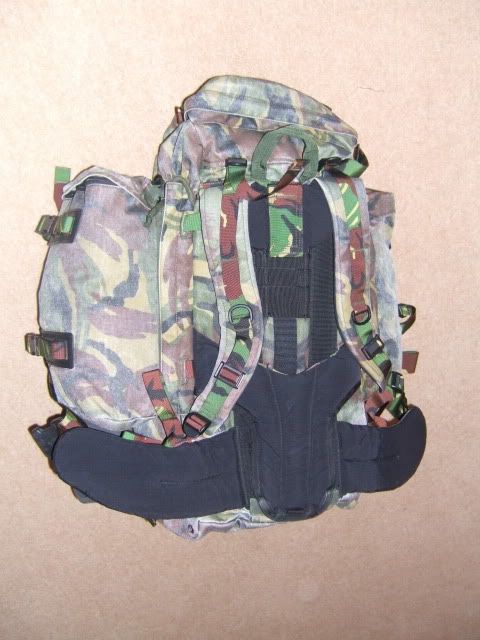
2. Something to sleep under
Personally I sleep under a tarp, that's because I like being fairly close to the woods and nature, and the tarp allows me to take all this in. Many people prefer to use tents which is of course their choice. For some climates a tent is a must, they also offer more privacy than a tarp.
Mine is a DD standard tarp, just the right size for me; whether I'm on the ground or in my hammock.

Depending on my length of trip I may also take another smaller tarp for my living area. This allows me to store food and also dry (or keep dry) firewood, if in an area where making a natural shelter is unacceptable.
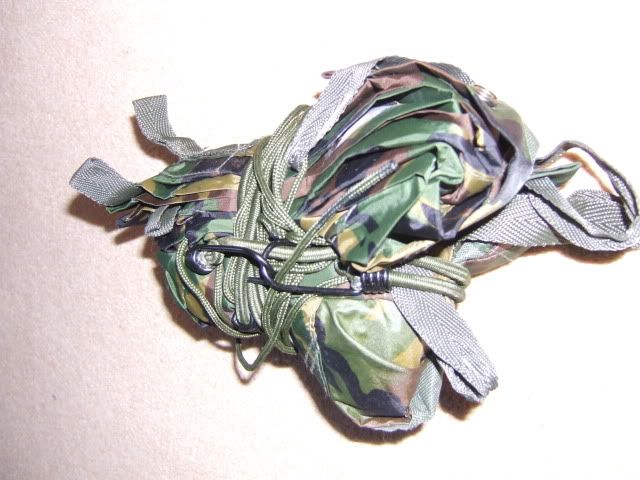
3. Something to sleep in
To me the sleeping bag is the most important piece of equipment. If I have a poor night sleep I can feel miserable and demoralized, a good night sleep and it allows me to really enjoy myself.
My preference is down, as it is light and packs down relatively small as well. I keep mine in a dry sack as it is important to note that wet down is ineffective, a consideration you must take into account depending on your climate of travel.
Mine is a mountain equipment classic 500.
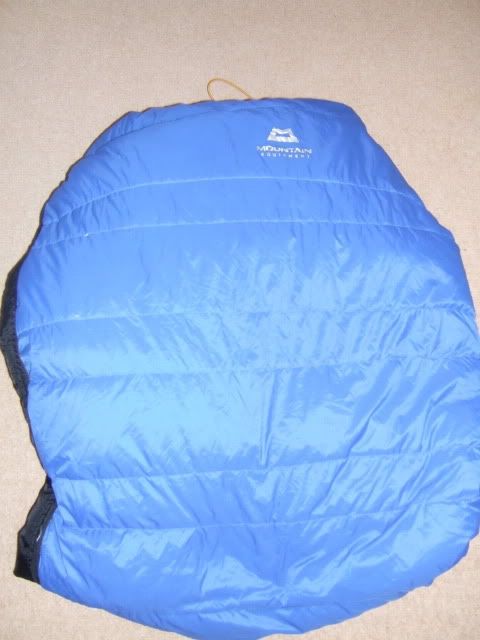
and here in dry bag
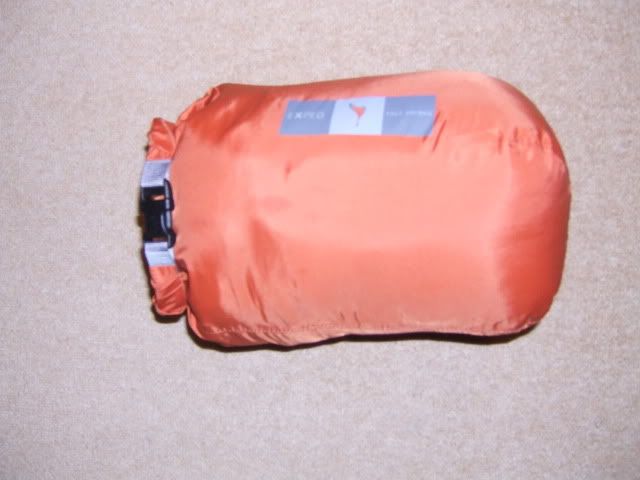
The other two items I "sleep in" are my Hammock or my Bivvy bag.
The hammock is a love it or hate it convenience. I love them however I can never be sure of finding a pitch spot, also they can be slightly less effective in stormy conditions as they don't allow you to adopt the fetal position!!
Anyway mine is a nomad tropical XXL hammock.
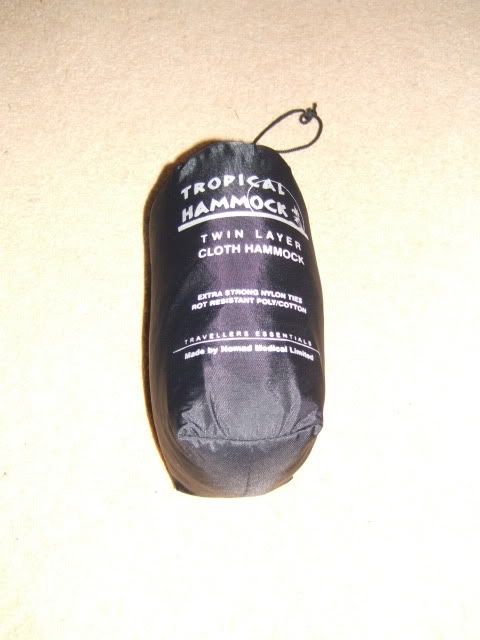
The bivvy bag is a great piece of equipment as, in good weather, it can exclude the need for any sort of cover. It's also a useful item for floor dwellers with down sleeping bags as it keeps their bags dry and effective.
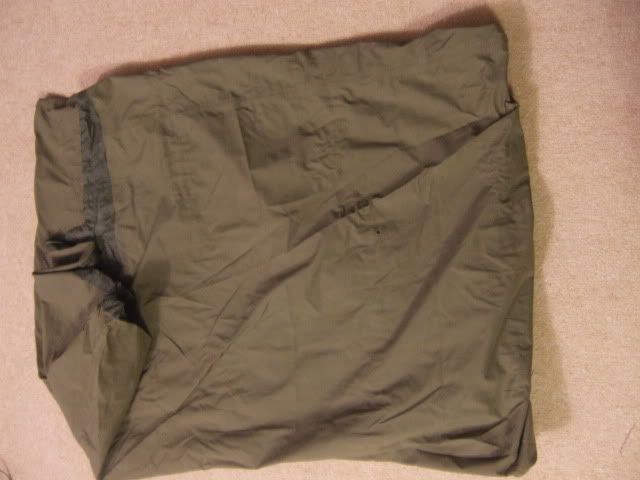
and here rolled up
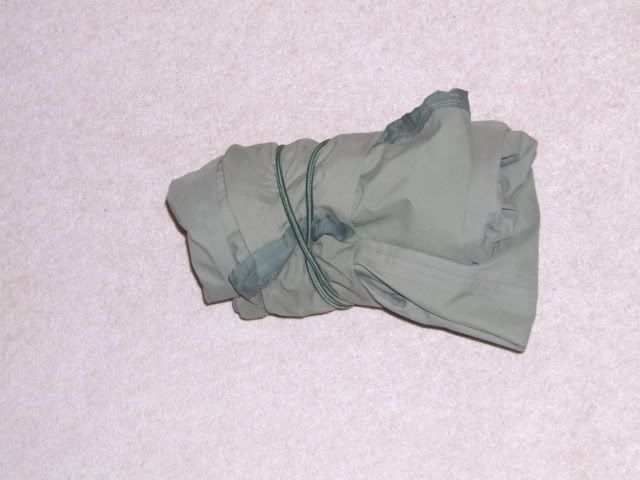
4. Something to sleep on
A simple topic this one but very important. Without something to separate you from the ground, your heat will be absorbed by the ground and not used to warm you. I've slept without any insulation and it made for a very, very uncomfortable night.
My preference is for the classic sleeping mat. They're inexpensive and lightweight. The other option of course is a self inflating mattress, I tried them and never really got on with them but again it's an "each to their own thing".
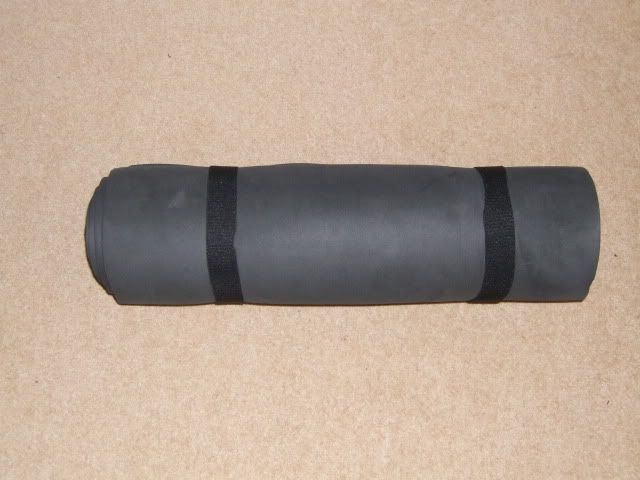
5. Navigational equipment
This is an interesting topic as it is fairly dependent on what type of trip you are taking. Camping 50 yards away from a car park or other people doesn't require a sextant or any other gizmo!! If I could afford a GPS I'd probably buy one but I never really find them necessary, I seem to get by! I also have my phone with me which thinking about it actually could provide GPS in an emergency situation.
I use a standard Silva compass, and a button compass for emergencies.
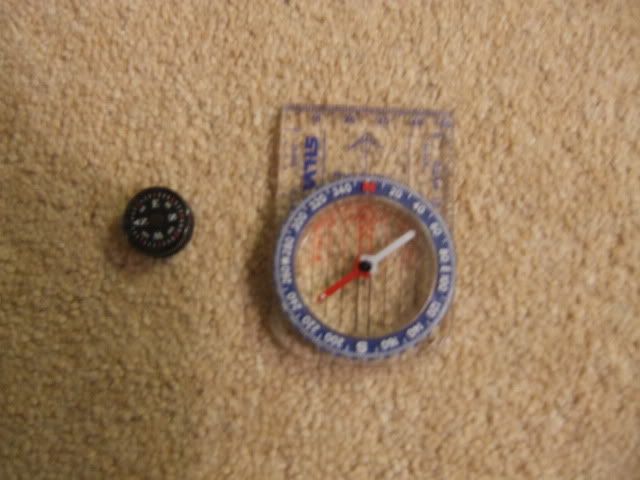
6. Something to cook over
I've quite happily cooked over nothing but an open fire for a fair few days however, as I previously stated it is hard to guarantee the legality of an open fire in Britain so for back up I take a Trangia burner and (very recently) a honey stove (before I used a hex burner). This is good for me as it takes up very little space and most importantly I enjoy using it. It is also functional as it allows the use of a wood burning stove which can give the glow of a real fire without using too much material or breaking too many rules.
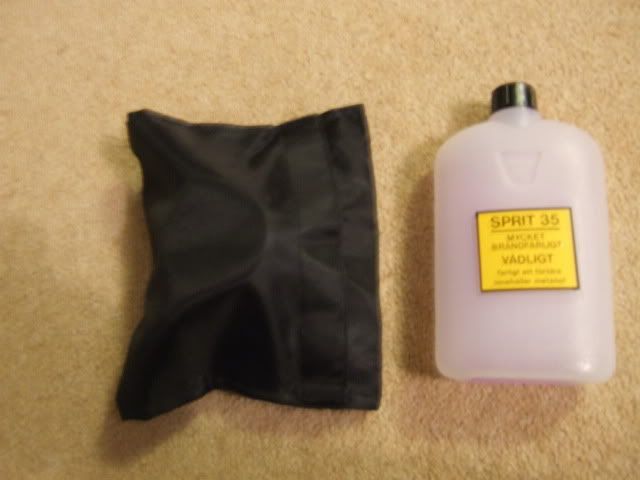
Here is the burner and stove set up with burner
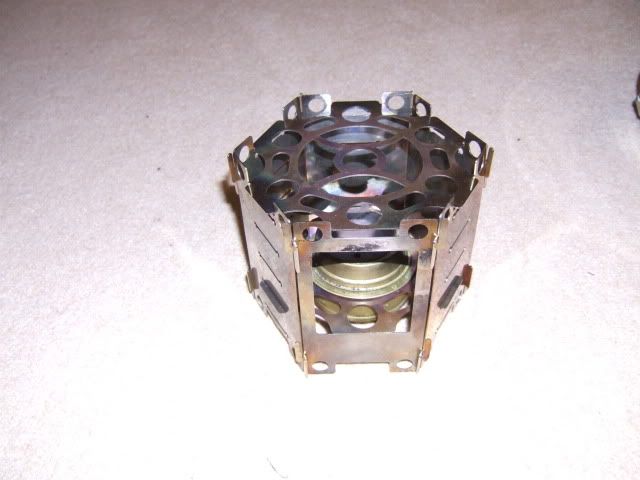
7. Something to cook in
Probably the hardest thing to substitute for a natural alternative is the cooking pot. They're also a relatively inexpensive piece of kit. I've used billy cans made from biscuit jars and the like however recently I've upgraded to something a little more versatile.
I use two items; a Tatonka 1.6l billy (which is a large capacity for one person). I also use a gelert kettle because I'm a bit OCD about boiling water in an actual kettle, I also find it gives a lovely homely feeling to a camp.
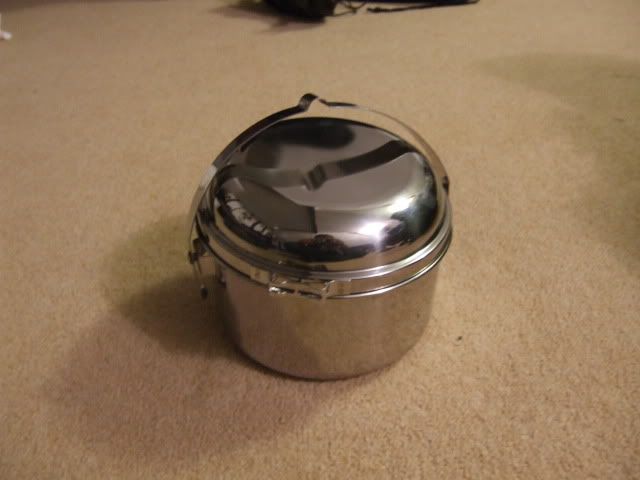
Shown here is everything unpacked, also included is my millbank bag which is part of my water purification system (a must if you are taking water from an unknown source).
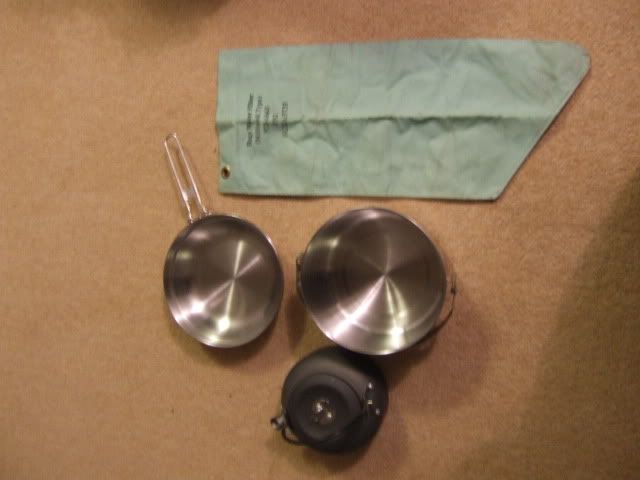
8. Something to carry water in
Nice easy section this! If there is no water source where you are staying you must take some , simple! I use two water bottles and have improvised by filling a dry bag with water (holds about 10L) reasons for this are self explanatory so I won't go into it. It's also not a section where much consideration needs to be taken over selection.
Top left is Dutch water bottle, bottom left is British water bottle and on the right is a dry bag.

9. A mug
A big mug is useful as, if packing light, you've got a boil in the bag pot and also a drinking utensil in one pot. I use a Dutch army mug that goes with my bottle.
The black stuff on the edges is insulation tape to stop you burning your lips when hot.
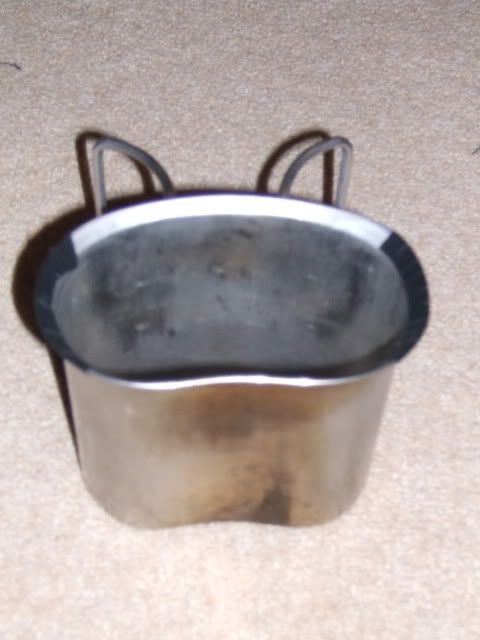
10. Eating utensils
The advantage of plastic is that it doesn't scratch pots when cooking and is light, however I've tried eating a lovely steak with a spork, it didn't really work! I take a KFS set and a spork because they don't weigh a lot and they make my life easier!
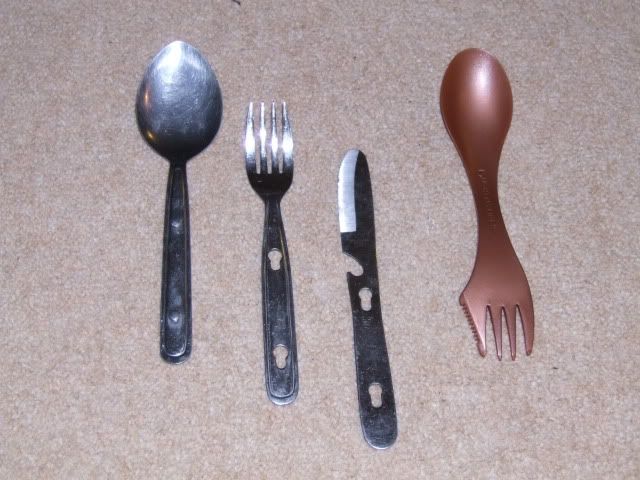
11. Medical kit
Hopefully something you will never have to use but a must all the same. I use a small pre made first aid kit and also carry two first field dressings just in case something went horribly wrong when using the axe! Keep it on your belt, that way you won't leave it behind when you most need it. remember a first aid kit doesn't just have to be for emergencies, in mine I have savlon and blister plasters to make my life a bit more comfortable.
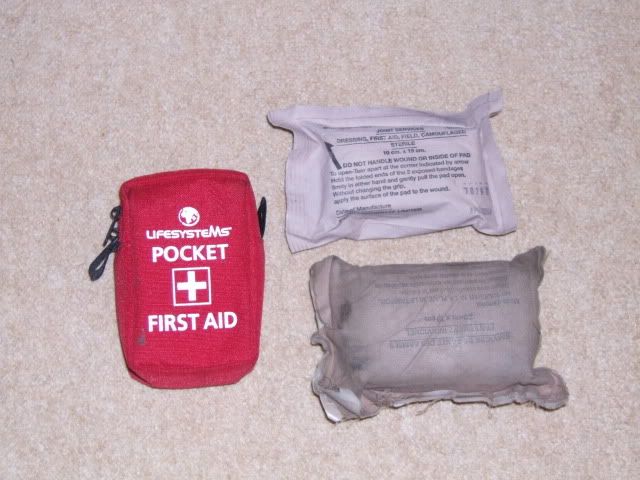
From Left to right:
Top row: antiseptic wipes and long length of plaster
Middle row: Gauze, scissors and savlon
Bottom row: Bandage, safety pins and blister plasters
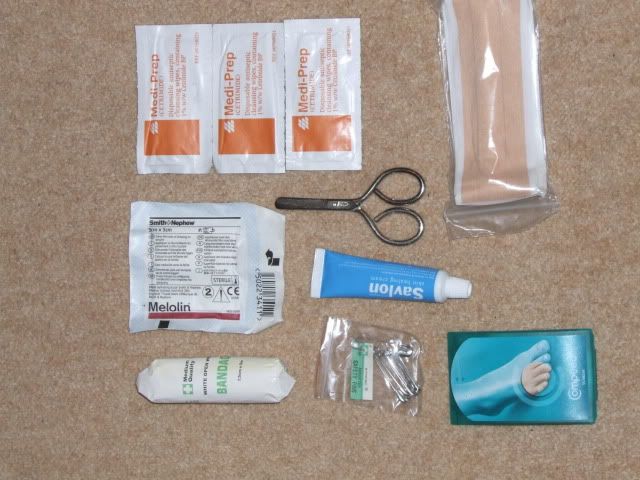
12. Illumination at night
Well it's nice to be able to see is it not?!
Convention seems to be to carry at least one night lighting item. Certainly an item that has become very popular with the bushcrafting fraternity is the head torch. They're not that expensive anymore and they allow you to get on with other tasks with no hindrance, particularly useful if you intend to cook, read or enter a hammock after dark!
I also carry a maglite as it has candle mode which I can use as a lamp, and a little lED dongle for hanging on my tarp so I can find my camp at night if needs be.
My head torch is a Petzl and it has never let me down, cost me £15 off ebay.
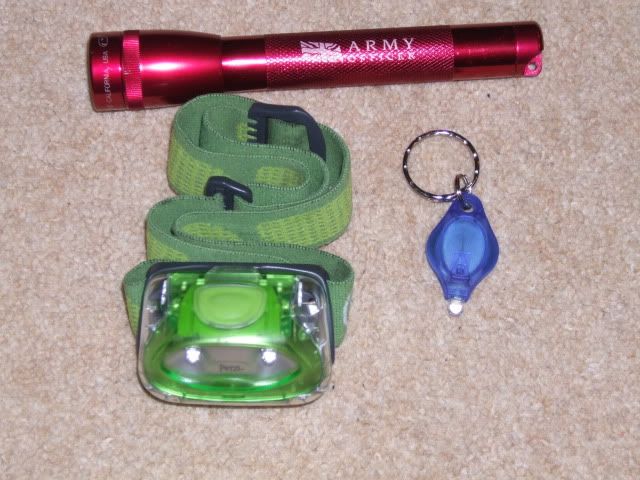
13. Wash kit
I always carry a pretty full wash kit because I'm a bit of a clean freak! I suppose the utter minimum is a tooth brush and paste plus a bar of soap. The rest is luxury but there's nothing wrong with making life comfortable for yourself.
From left to right: razor, shaving oil, shower gel/soap, tissues, tooth brush, tooth paste, deodorant.
Bottom line: Mirror and tick removal kit.

Possibles- odds and ends to make life comfortable
O.k so in this section I've just included the rest of the stuff in my bag.
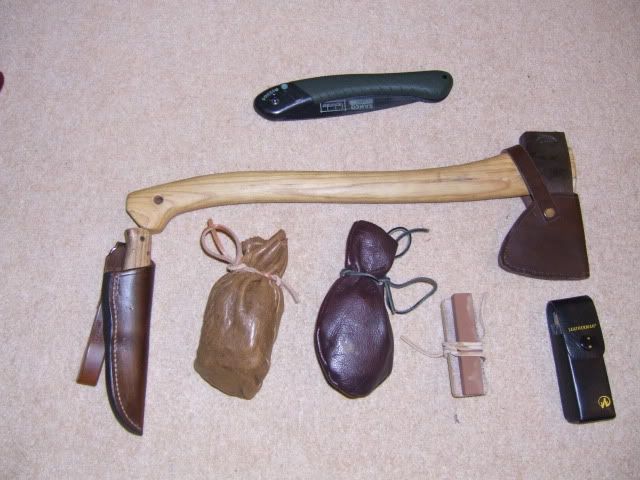
Top is laplander saw.
Next is gransfors small forest axe
Bottom line L to R: Knife, "modern fire pouch", dragons breath fire pouch, sharpening set and leatherman Core.
The "modern fire pouch", which is also known as the "It's natures time of the month and doesn't want to play pouch". Contains some things I can use to start a fire or light a stove. All fires must start with something dry so I use a tin sealed with vaseline crammed full of wax impregnated paper which I'm mad about. The paper lights from a spark and burns long enough for damp twigs to dry out and catch.
Also in the pouch is a firesteel, some matches for the Trangia and, for when life really sucks, a turbo flame lighter.
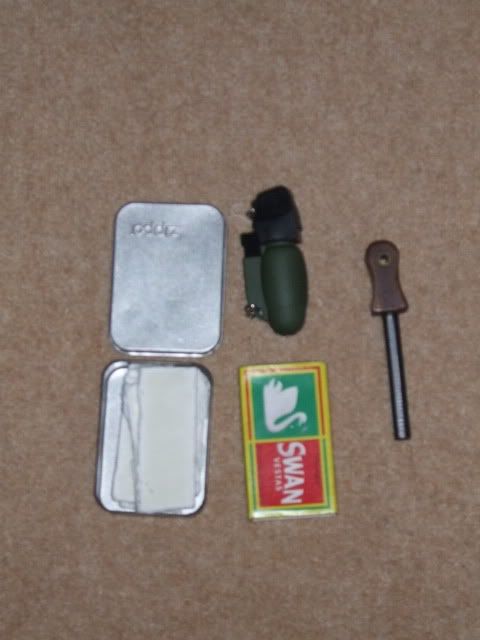
In the dragons breath kit is a flint and steel and some tinder, a completely unnecessary item but it's so much fun to use that I have to take it.
The sharpening kit consists of three items:
From Left to Right:
Cut down 1000 grit water stone, strop with buffing compund and a falkniven DC3.
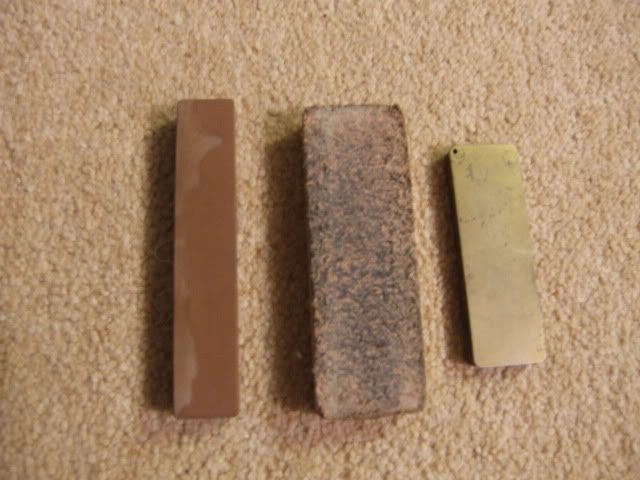
The water stone is mainly used for the axe but on a short trip the strop gets the most use as it just touches up the edge.
I think it's important to carry something to sharpen your tools with, especially since it weighs so little in this size. A sharp tool is a safer than a blunt tool at the end of the day.
Last luxury item is a chopping board. a complete luxury but very useful. It's wafer thin and flexible, slides down the back of the pack and weighs next to nothing. It just seems intelligent to have somewhere sterile and clean to prep food, and since it weighs nothing I might as well!
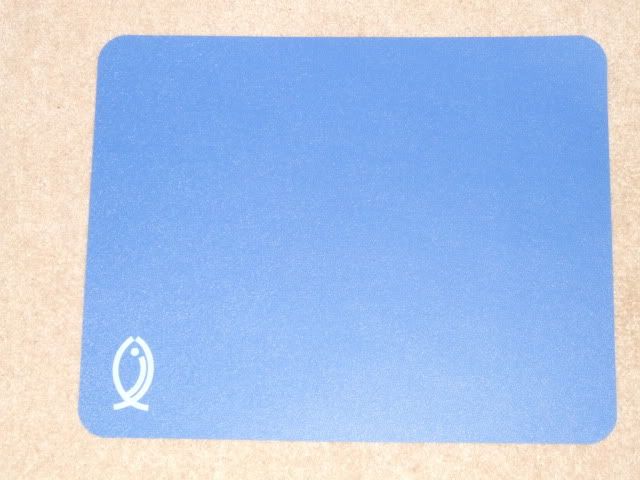
O.k well that concludes my guide and the somewhat show and tell of my kit. Remember kit choice is a very personal thing, never let anyone tell you they have what's best for you, however take a look at others and see if it provides some inspiration.
Also it is important to note that this kit was collected over a period of time, after working out what's best for me, it may not be what's best for you. However what I hope is that it is a skeleton base for a beginner to base their kit around, and of outside interest to those with their own load out already.
Enjoy yourself and have fun.
Cheers,
Will
PS.
It doesn't seem too heavy, I have spoilt a couple of my trips by over loading my back pack and making the hikes a chore,
Sent by Tigger from my Tablet
Great post, I am always interested in seeing other people's kit / equipment. I spend hours on YouTube looking at equipment videos.
cheers for the write up! do you put your hammock, tarp, bivi etc in your side pouches?? the reason i ask is i am a floor dweller and put my sleeping sytem in the side pouches of my bergen. im soon to be a tree dweller and was wondering if my xmas prezzie hammock & tarp would fit. many thanks...
I have read somewhere, that it is best to balance the load in the two side pockets, therefore if tarp/sleep system on one side, what would you put on the other side? Then, whatever is in the side pockets now would need to be inside the pack.
Similar threads
- Replies
- 1
- Views
- 193
- Replies
- 18
- Views
- 865
- Replies
- 60
- Views
- 2K
